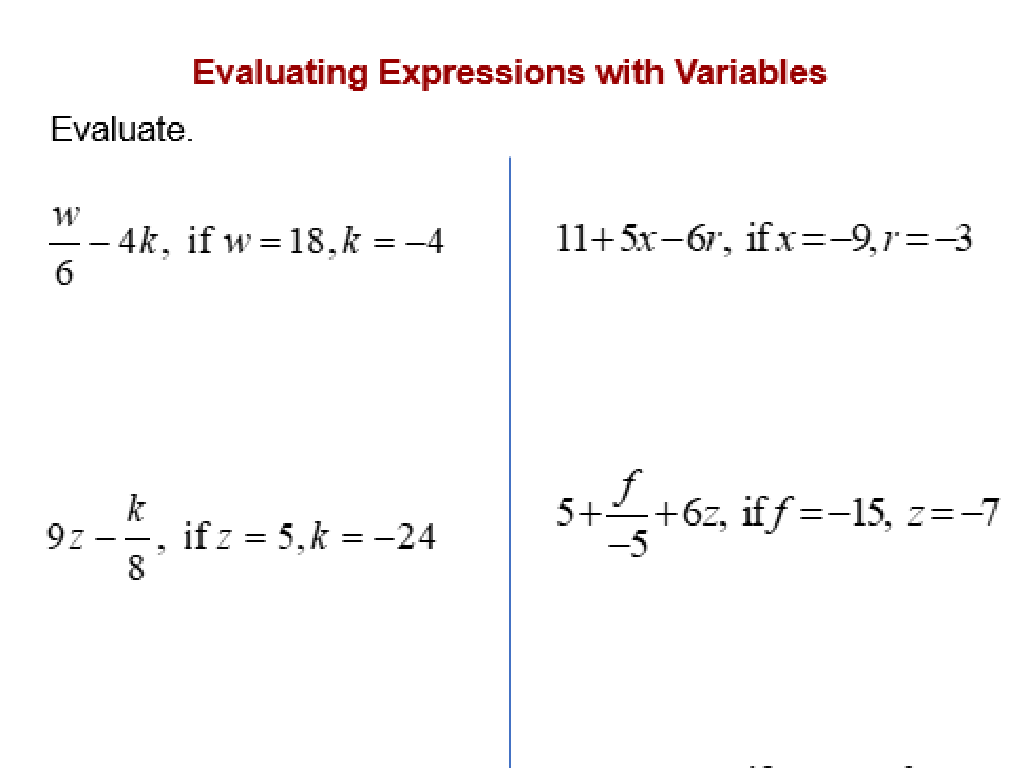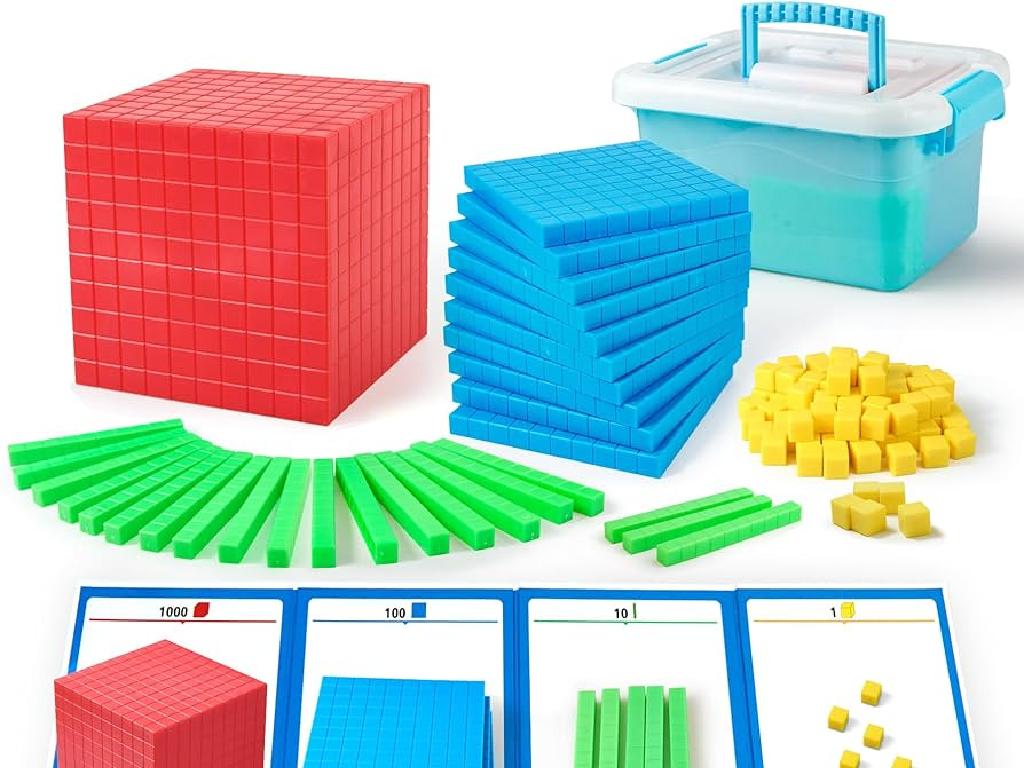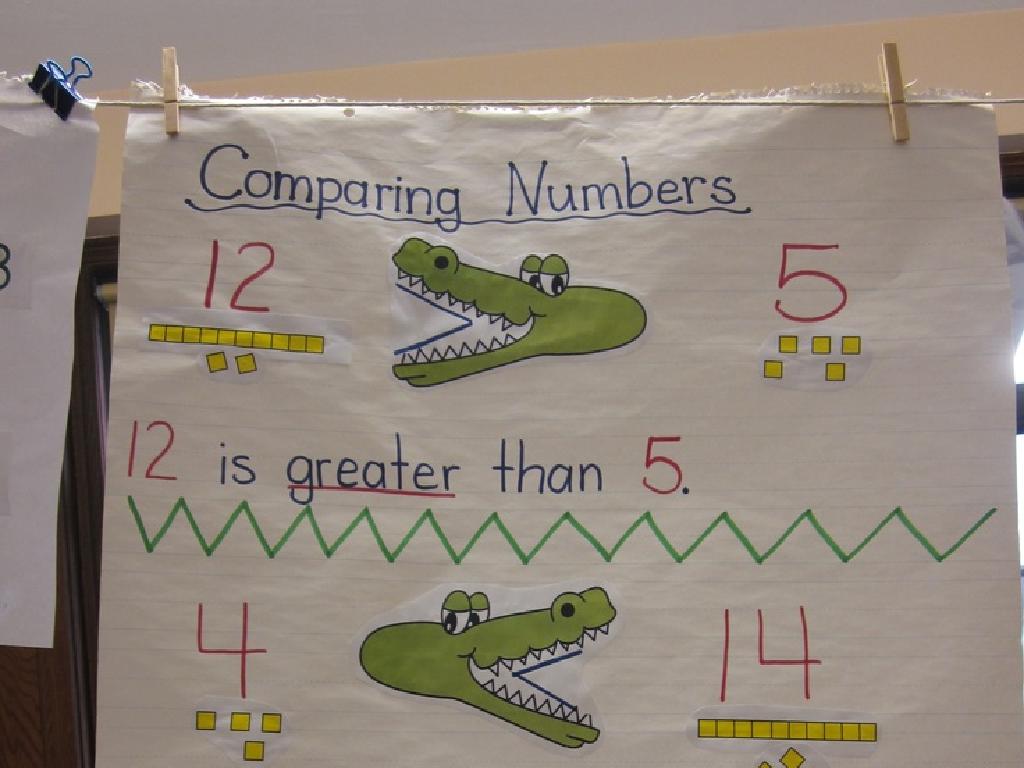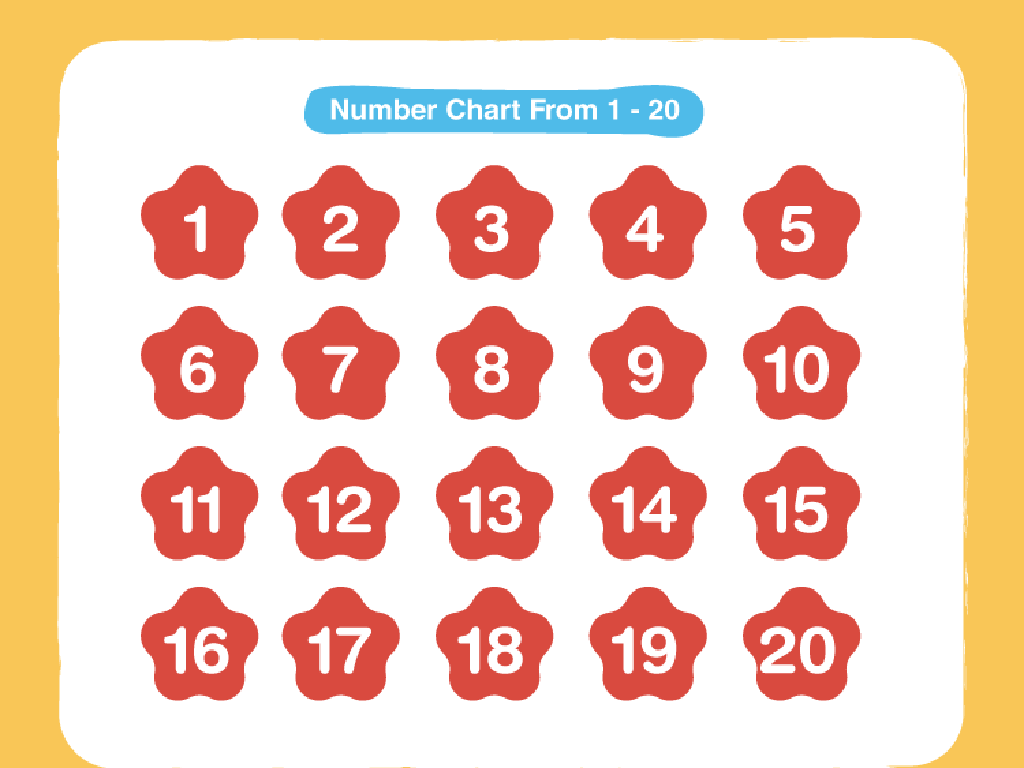Find The Constant Of Variation
Subject: Math
Grade: Eighth grade
Topic: Direct Variation
Please LOG IN to download the presentation. Access is available to registered users only.
View More Content
Exploring Direct Variation
– Define direct variation
– When two variables increase/decrease together
– Relationship between variables
– One variable is a constant multiple of another
– Direct variation in real life
– Car speed and travel time, recipe ingredient adjustments
– Calculating the constant of variation
– Use k = y/x to find the constant, where k is constant, y is output, and x is input
|
This slide introduces the concept of direct variation, a fundamental relationship in algebra where two variables change at the same rate. Direct variation is expressed as y = kx, where k is the constant of variation. It’s crucial for students to understand that in direct variation, as one variable increases, the other increases proportionally, and vice versa. Real-life examples, such as the relationship between the speed of a car and the time taken to travel a certain distance, or adjustments in a recipe based on the number of servings, can help solidify this concept. Encourage students to think of other examples from their daily lives. The slide concludes with the method to calculate the constant of variation, which is the ratio of the dependent variable (y) to the independent variable (x).
Exploring Direct Variation
– Define direct variation
– A relationship where as one amount increases, another amount increases at a constant rate.
– Introduce the formula y = kx
– In the formula, k represents the constant of variation.
– How to identify constant k
– Find k by dividing y by x when y varies directly as x.
– Practice with examples
– Use sample problems to calculate k in direct variation scenarios.
|
This slide introduces the concept of direct variation, a foundational element in understanding linear relationships in algebra. Direct variation describes a linear relationship between two variables where one is a constant multiple of the other. The formula y = kx is crucial, where k is the constant of variation. It’s important for students to learn how to identify and calculate this constant because it describes the rate at which the variables change together. Provide clear examples where students can practice finding k by dividing the y-value by the corresponding x-value. Encourage students to work through several problems to become comfortable with the concept and the calculations involved.
Finding the Constant of Variation
– Use a proportion to determine k
– Example: y = 5 when x = 2
– If y varies directly with x, and y = 5 when x = 2, k = y/x = 5/2
– Practice: Find k for y = 8, x = 4
– Apply the formula k = y/x to find k
– Understanding k in direct variation
– k is the constant ratio in y = kx
|
This slide introduces the concept of the constant of variation (k) in direct variation relationships. Start by explaining that k can be found using a proportion where k = y/x. Use the example provided to show how to calculate k when y and x values are known. For the practice problem, guide students to apply the same method to find k when y = 8 and x = 4. Emphasize that k remains constant for any values of x and y that are in direct variation. Encourage students to solve the practice problem and reinforce the concept that in the equation y = kx, k represents the constant of variation, which is the same for all pairs of corresponding values of x and y in the relationship.
Graphing Direct Variation
– Plotting points for direct variation
– Use ordered pairs that satisfy the equation y = kx
– Understanding the role of ‘k’
– ‘k’ determines the steepness of the line
– Graphing lines with different ‘k’ values
– See how changing ‘k’ affects the graph’s slope
– Class activity: Exploring ‘k’
– Students will graph lines with various ‘k’ values
|
This slide introduces students to the concept of graphing direct variation. Start by explaining that direct variation can be represented by the equation y = kx, where ‘k’ is the constant of variation. Show how to plot points that satisfy this equation. Discuss the role of ‘k’ and how it affects the steepness of the line, demonstrating with different values. For the class activity, provide students with different ‘k’ values and ask them to graph the corresponding lines. This will help them visualize the impact of ‘k’ on the graph and understand the concept of slope. Ensure to have graph paper and rulers available for students to use during the activity. Offer guidance as needed and encourage students to discuss their observations.
Real-World Applications of Direct Variation
– Direct variation in science
– Example: Speed = Distance/Time
– Using direct variation in predictions
– Predict population growth or decay
– Direct variation in engineering
– Design of gears and pulleys systems
– Group discussion on real-life examples
|
This slide aims to connect the concept of direct variation with its practical applications in fields like science and engineering. Direct variation is a fundamental principle where two variables change at a constant rate. For instance, speed varies directly with distance when time is constant. Students can apply this concept to predict outcomes such as population changes over time. In engineering, direct variation principles are used to design systems with gears and pulleys. Encourage students to engage in a group discussion to brainstorm and share examples of direct variation they’ve encountered in their daily lives, such as recipes in cooking or fuel consumption in cars. This activity will help solidify their understanding of the concept by relating it to familiar experiences.
Class Activity: Discovering the Constant of Variation (k)
– Understand the constant of variation
– Work in pairs on given value pairs
– Find k for each set of values
– Use the formula k = y/x to calculate k
– Share and discuss your solutions
|
This activity is designed to help students apply their knowledge of direct variation to find the constant of variation, k, from given pairs of values. Students should work in pairs to encourage collaboration and discussion, which can lead to a deeper understanding of the concept. Provide each pair with a set of problems where they will apply the formula k = y/x to find the constant of variation. After solving the problems, students will share their solutions with the class and discuss any differences in their answers. This will help them learn from each other and clarify any misconceptions. Possible activities for different pairs could include finding k from tables, graphs, and word problems to ensure a variety of practice.
Conclusion: Direct Variation and Constant of Variation
– Recap: Direct Variation
Direct variation describes a linear relationship between two variables where one is a constant multiple of the other.
– Significance of Constant of Variation
The constant of variation (k) determines the rate of change and the strength of the correlation between variables.
– Q&A Session
– Review and Practice
Let’s solidify our understanding with additional examples and problems.
|
As we wrap up, let’s review the key concepts of direct variation, emphasizing the role of the constant of variation (k) in these relationships. It’s crucial for students to understand that k is not just a number, but it represents the consistent rate at which the dependent variable changes with the independent variable. During the Q&A, encourage students to ask questions to clear up any confusion. Conclude with a few practice problems to ensure students can find the constant of variation and understand its significance in real-world contexts, such as speed and distance, or cost and quantity.
Homework: Mastering Constant of Variation
– Practice problems on constant of variation
– Solve different problems to understand how to find the constant of variation in various contexts.
– Get ready for a direct variation quiz
– Review the direct variation concepts to prepare for the quiz.
– Remember, practice makes perfect!
– Review and ask questions if unsure
– Go over your notes and reach out for help if there are any concepts that are unclear.
|
This slide is to assign homework and prepare students for an upcoming quiz on direct variation. The homework consists of practice problems that focus on finding the constant of variation, which is a key concept in understanding direct variation. Encourage students to practice diligently as it will reinforce their understanding and help them perform better in the quiz. Remind them that consistent practice is essential for mastering mathematical concepts. Additionally, advise students to review their class notes and not hesitate to ask questions if they encounter any difficulties while studying. This proactive approach will help them clarify any doubts and solidify their grasp of the topic.






